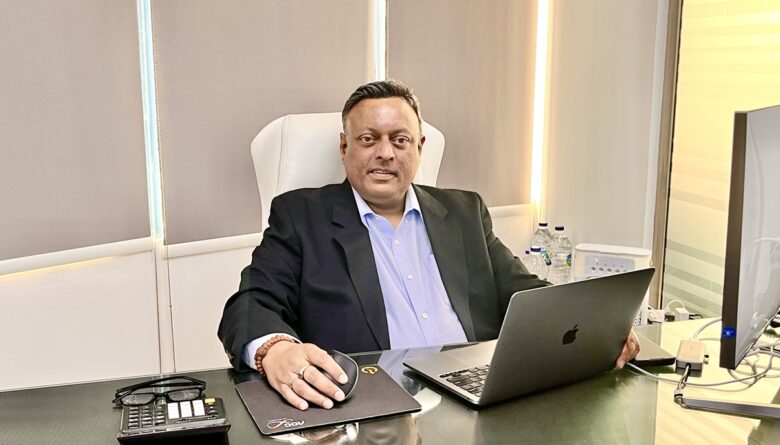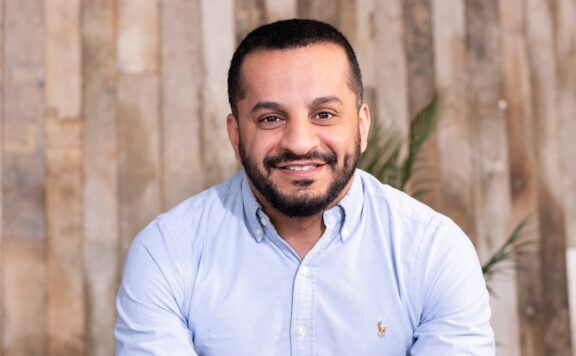Suchit Kumar, CEO of TEXUB, describes the company as a global B2B marketplace redefining IT and consumer electronics trade through its inventory-free distribution model, AI-driven platform, and focus on sustainable, cross-border growth.
What inspired you to launch TEXUB, and how has your entrepreneurial journey shaped the company’s vision and culture?
An apparent gap in the global IT trading landscape drove the idea for TEXUB. Traditional B2B trade was still highly manual, geographically limited, and lacked transparency. With over three decades of experience in this space, I saw the need for a platform that could digitise global distribution without inventory liabilities. TEXUB was born with the vision to build a secure, borderless, and inventory-free marketplace.
Today, our culture embodies that same entrepreneurial spirit that is agile, technology-driven, and relentlessly focused on solving real-world trade inefficiencies through continuous innovation.
Looking back, what were some of the toughest decisions or pivotal moments you faced in building TEXUB from the ground up?
Our pivotal moment was in choosing the right technology stack that could scale globally, while remaining agile and secure. Ensuring compliance with diverse trade regulations across multiple geographies added complexity, requiring extensive planning and strategic foresight.
The other complex decision was in building the TEXUB business with a no-inventory model in an industry traditionally reliant on physical distribution and stockholding. It challenged long-established norms and required building deep trust among stakeholders in a fully digital, decentralised system.
Equally critical was the early-stage onboarding of credible, global sellers. Convincing them to adopt a new, untested platform demanded a clear value proposition, strong relationship-building, and unwavering confidence in the model. These early decisions, though challenging, were foundational. They shaped TEXUB into a scalable, secure, and trusted global B2B marketplace that is now redefining digital trade in the IT and Consumer Electronics space.
Can you share insights into TEXUB’s financial journey so far—how do you balance growth with profitability, and what are your current P&L priorities?
TEXUB’s financial journey has been driven by a clear focus on sustainable growth, backed by strategic investment in technology, market expansion, and partner acquisition. In the early stages, our priority was platform development and establishing global credibility, which required upfront investment. We adopted a lean operating model, avoiding heavy infrastructure or inventory costs, enabling us to scale efficiently while keeping fixed costs low.
Balancing growth with profitability has meant prioritising markets and product categories that offer both volume and margin potential. Currently, our P&L priorities are centered on optimising unit economics, increasing transaction volumes, and improving contribution margins through automation and operational efficiencies. We have invested in AI-driven tools and built an in-house Marketplace CRM that enhances buyer-seller matching and streamlines deal cycles, further improving our revenue per-transaction metrics whilst enhancing workforce efficiency by 65 per cent. As we scale, the focus remains on achieving profitability through smart growth.
Are there any immediate or future funding requirements for TEXUB, and what kind of investors or strategic partners are you looking to align with?
At this stage, TEXUB is well-capitalised and financially stable. However, we remain open to strategic partnerships that offer more than just capital. We are open to looking at partners who bring a deep understanding of platform economics, cross-border trade dynamics, and the nuances of B2B ecosystems. Any future funding we consider would be purpose-driven, aimed at accelerating our expansion into new regions and enhancing our technological capabilities to deliver even greater value to our global user base.
What does the next phase of growth look like for TEXUB—geographically, technologically, or in terms of market verticals?
The next phase of growth for TEXUB is focused on three key pillars: geographic expansion, technological advancement, and vertical diversification.
Geographically, we are targeting deeper penetration into high-potential markets across Africa, Southeast Asia, and Latin America. Technologically, we are investing in advanced AI and data analytics to personalise the user experience further, enhance predictive pricing, and automate trade workflows. In terms of verticals, while the IT hardware trade remains our core, we plan to expand into adjacent categories such as Consumer Electronics and mobility solutions, leveraging our existing infrastructure and partner network to drive growth.
How do you view the current startup ecosystem in the Middle East, and what makes it unique or challenging for tech founders?
The startup ecosystem in the Middle East has evolved rapidly over the past few years, driven by strong government support, growing investor interest, and an increasing appetite for innovation. Initiatives like Dubai’s “Digital Economy Strategy” and Saudi Arabia’s Vision 2030 are fostering a pro-startup environment, with significant infrastructure, funding, and regulatory support for entrepreneurs.
However, challenges remain. Market fragmentation, regulatory variances between countries, and the need for more late-stage capital are key hurdles.
In your experience, how accessible is talent—especially in tech, product, and operations—in the Middle East, and what can be improved?
Tech and product talent in the Middle East is growing, but there is still a gap in niche skills and experience within platform-based businesses. We have accessed the right expertise both regionally and globally. Upskilling programs, cross-border knowledge exchange, and deeper academic-industry collaboration could significantly improve talent accessibility.
Do you believe funding for startups in the region is evolving fast enough, and what would you like to see more of from VCs and institutional investors?
Funding for startups in the Middle East is evolving, but there’s still room for acceleration, particularly beyond the seed and early stages. Many startups still face a funding gap when it comes to scaling and accessing Series A and beyond.
What advice would you give to aspiring entrepreneurs in the tech and platform space who are just starting out in the Middle East?
Start with a real, well-defined problem and don’t chase trends. The most successful platforms solve meaningful inefficiencies and create real value. Build with scalability in mind from day one, but stay agile enough to adapt as the market evolves. Surround yourself with people who challenge your thinking, and bring diverse perspectives, and the right team is critical to navigating the highs and lows of the startup journey.
Most importantly, be persistent. The Middle East offers immense potential for tech innovation, but building in this region requires resilience, patience, and a deep understanding of local dynamics.





